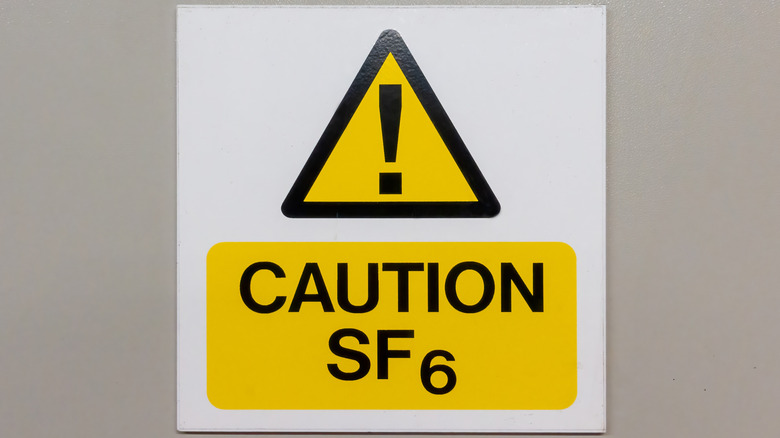If You Thought Helium Was Cool, This Gas Makes Your Voice Super Deep (But It Can Be Pretty Dangerous)
One of the everyday uses of helium gas is for making balloons float, and it's not uncommon for people to suck the gas out of balloons to make their voices sound high-pitched. However, there's another gas that does the complete opposite: Sulfur hexafluoride makes your voice sound deep.
Made up of one sulfur atom and six fluorine atoms, sulfur hexafluoride is often called by its chemical formula SF6. This non-flammable gas is colorless and odorless, and it's also denser and has a higher molecular weight than the oxygen and nitrogen that you usually breathe in the air. Because of that, when you talk after breathing in SF6, the sound waves from your vocal cords travel slower through the gas than through normal air. This slower movement amplifies the lower frequencies in your voice, making it sound like you have a deeper timbre than you actually do.
This reaction is the complete opposite from helium, a less dense gas with a lower molecular weight than normal air (which is why it makes balloons float). In that case, the sound waves in your larynx move through helium faster than through regular air. The accelerated movement amplifies the higher frequencies in your voice, making everything you say sound more squeaky than usual.
Breathing in sulfur hexafluoride isn't all fun and games
It can be fun to play around with sulfur hexafluoride, but it's not recommended to do it a lot because of how dangerous the gas can be. Although it's not a toxic gas and can't harm your lungs just by breathing in a little, the problem lies in its higher molecular weight. The heavy gas sinks to the bottom of your lungs because it's heavier than oxygen. As a result, the oxygen in your lungs gets pushed out, reducing the amount of oxygen in your blood as well. Breathing in too much or for an extended amount of time can lead to asphyxia, which is characterized by irregular breathing, a higher heart rate, weakness, and even nausea and vomiting.
On top of that, SF6 can be detrimental to the environment. As a fluorinated gas, it's among the greenhouse gases that are the most potent. In fact, it's 24,300 times as strong as CO2 when it comes to holding infrared radiation in the atmosphere. It's used in the production of and as an insulator for high-voltage electrical equipment, as well as in the production of crystalline silicon for some solar power equipment, which is one of the hazards of solar power.

